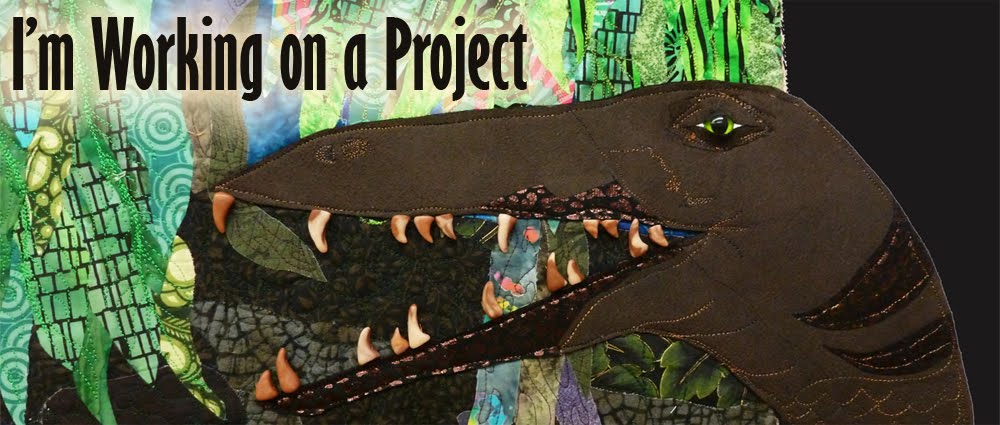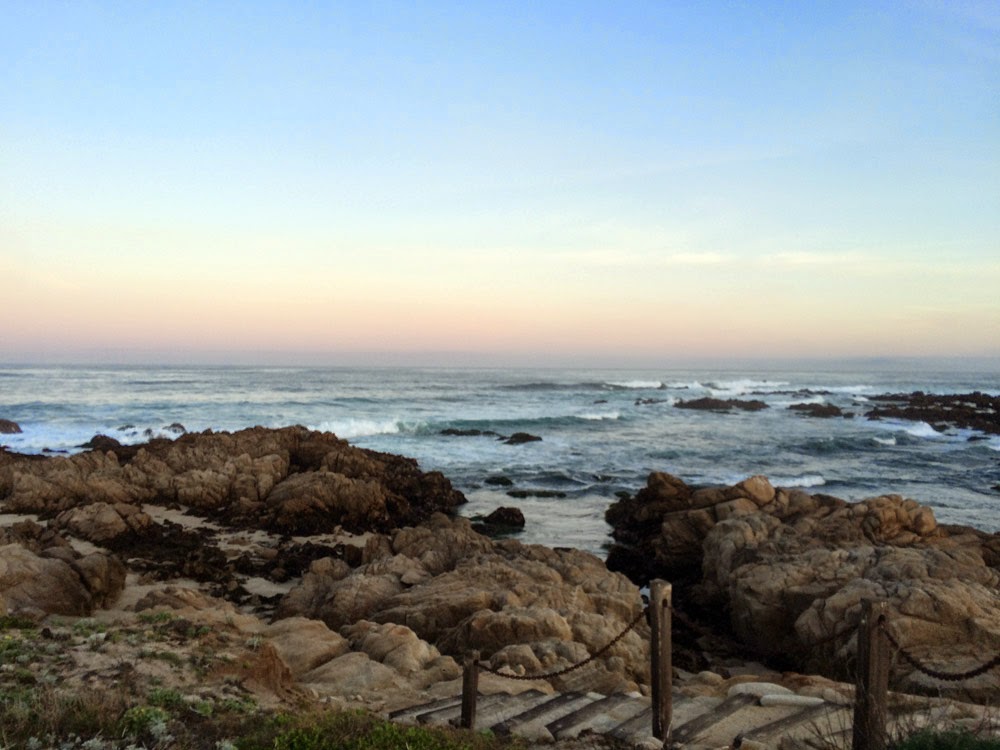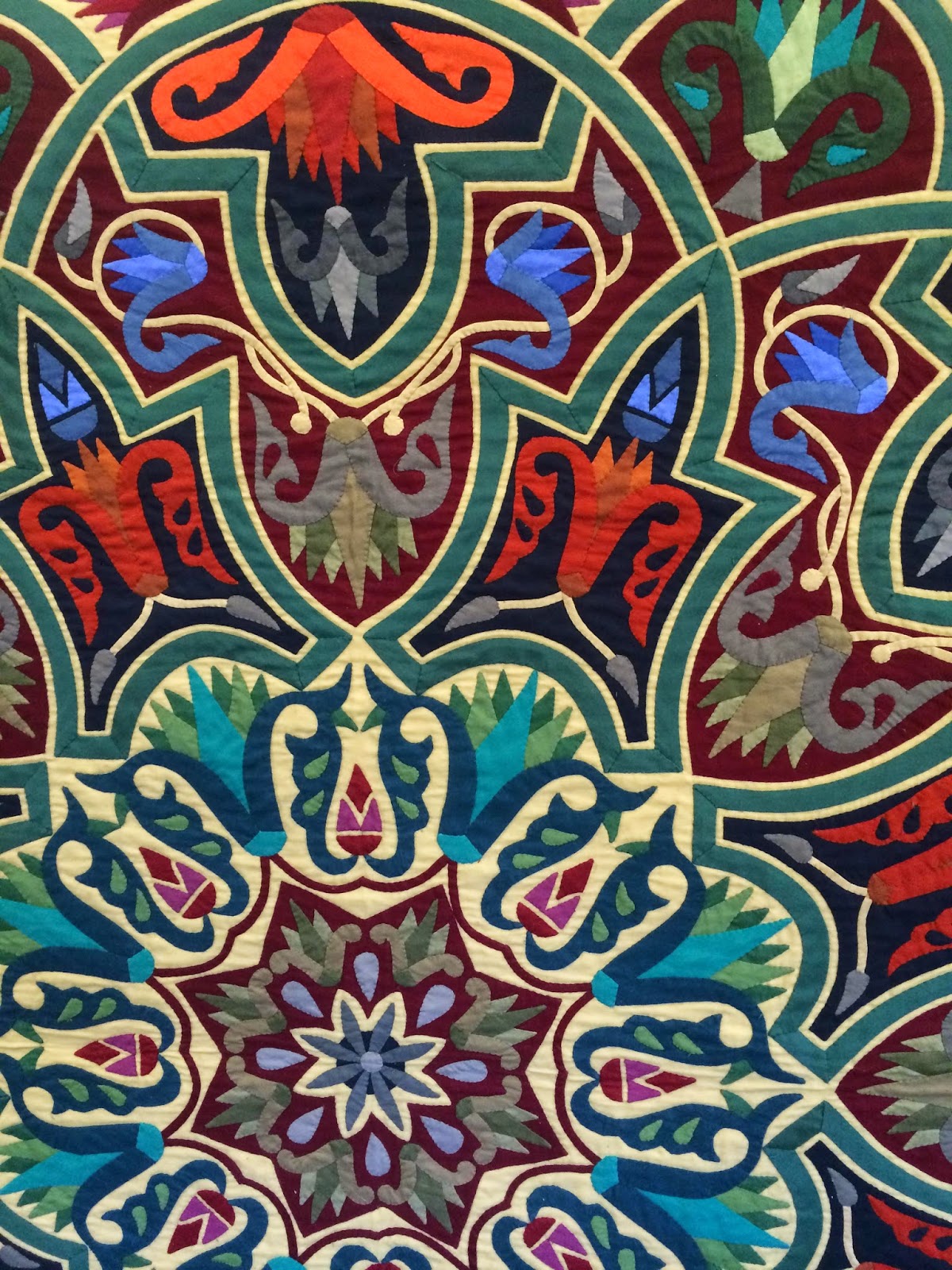Our regional SAQA group has put together a showcase called Midwest Metaphors which opens this weekend at the Leedy-Voulkos Art Center in Kansas City, MO. My dragon quilt is in it (and made the flyer). The show runs through June 27th, so if you're in the area, stop by and check it out.
Wednesday, April 29, 2015
Friday, April 24, 2015
More Tiling and a Book Giveaway
For details on the book giveaway, just scroll to the bottom!
I've been talking about designing tiling designs in the workshop my mom and I took with Jenny Bowker. Since then I've been working on actually turning one of my designs into a quilt.
These are the tile designs I started with. I drew them to be as similar as possible except one has the dragon head and one has his tail.
I've been talking about designing tiling designs in the workshop my mom and I took with Jenny Bowker. Since then I've been working on actually turning one of my designs into a quilt.
These are the tile designs I started with. I drew them to be as similar as possible except one has the dragon head and one has his tail.
Here's the computer mockup of what they look like tiled. Again, sorry for the awful colors, it's just an attempt to get an idea.
I decided I'd make mine fusible applique and zig-zag around the edges with invisible thread. Jenny encouraged me to make the blocks quite large (~16") since they're pretty detailed and would have more visual impact if they were larger, but I really really wanted to use up the little bitty pieces of fabric I had left from cutting out the animals in these two quilts. It was really a lot of fabric, all with fusible already on it, but small weirdly shaped pieces. As a result my blocks are about 11" (finished). That really is too small, but I'm persevering! Here are the blocks- they'll be on a darker background and right now they don't line up right. Hopefully this is because they each have a bunch of seam allowance (which will be turned under), but I think lining them up will be tricky. I think they'll be more dramatic once I've quilted them, and the dragons definitely need eyes, probably a bead, but I'm liking them so far.
And now for the giveaway. A long while back, a call for submissions came out for quilts to be included in a book called 1000 Quilt Inspirations: Colorful and Creative Designs for Traditional, Modern, and Art Quilts My mom and I were both lucky to have quilts accepted into it, and after many months, hard copies finally arrived. It's full of wonderful quilts, definitely super inspiring eye candy. A couple of things I really like, one is that (as the name suggests) it contains really a wide variety of different types of quilts. The second is that it contains lots and lots of detail shots, so you can see up close what people have done or stitched. I'm giving away a copy, just leave a comment below and I'll use random.org to draw a name on the afternoon of Friday May 1st. Any kind of comment is fine, if you feel like it, tell me whether you're a pet person and if so, what kind of pets you have.
And of course, always linking up to Nina-Marie.
Monday, April 20, 2015
Attempts at a Tentmaker Design
On Friday I'll share more of the project I was working on in the Jenny Bowker class, but I just wanted to share one more exercise we did in the class. One of the things Jenny encouraged us to do was try our hand at designing a tentmaker style piece. The symmetrical ones are drawn as an 1/8th or 1/16th of a circle, and she showed us how to fold up our papers to draw them. Really similar to our tile exercises, just with bigger blocks, more detail, and the intention of having only four "blocks" to make one symmetrical piece. Here's the block I made, and last night I finally sat down in photoshop and colored it in. I'm not planning to make it into a quilt, but it was really fun to draw and then see what happened when I repeated it, and I think the design is pretty.
This is what it looks like if you turn the outside corners to the inside (and with slightly different colors). Still neat, but not quilt the original design idea I was going for.
And here's another one the real Tentmaker pieces that Jenny showed us (way! more complicated than mine).
Friday, April 17, 2015
Tiling
Last time I mentioned that my mom and I took a tiling workshop with Jenny Bowker on our last trip to Asilomar. The class was a five day workshop and about half the time we spent just drawing and designing tiles, doing different exercises and watching the way patterns and designs repeat and change in the process. Ever since I spent time in Spain in the late 90s, I've loved the look of Mediterranean and Islamic tiles, with their repeating patterns and bright colors, so it was fun to take a class with lots of drawing and designing things like that.
This was the first exercise: draw three lines (maybe with an echo on them) on a piece of paper folded into eighths and see what kind of patterns you get. Pick your favorite and see what happens when you trace it out and start repeating the single tile. In the second picture, you can see a variety of options for edges and corners, using pieces of the same original tile.
On this one (above) I was really unpleasantly shocked by how strong the plaid feeling was. I had no idea that would emerge. Even if I changed the colors, it was still pretty dominant. I love a plaid as much as the next person, but because of the way I drew the tile, It really became the main thing you see.
The one below was more successful on that front, I love the different patterns you get where each of the four corners intersect. The only think I wasn't crazy about with this one is that all the elements were about the same width/weight, and I thought it needed a bit of variety.
This was the first exercise: draw three lines (maybe with an echo on them) on a piece of paper folded into eighths and see what kind of patterns you get. Pick your favorite and see what happens when you trace it out and start repeating the single tile. In the second picture, you can see a variety of options for edges and corners, using pieces of the same original tile.
Next, practice with shapes. The idea is to have a repeating tiling pattern, rather than a shape splotched down in the middle of a block, so the shapes go off the edge. We first worked with vessel shapes since they were easy to draw and then experimented with what happened when multiple shapes were used on the same block and what would happen if you changed the size of the shape within the block. My first attempt (first picture left and second picture) used a single pot on the tile twice. Coloring it in helps with seeing the pattern, and one of the things Jenny suggested was using slightly different colors on each tile, that is, if you have a purple pot, use different purples on each tile to give the kind of variation you might expect if you were tiling a wall with handpainted tiles. For these exercises I was just using a limited palette of colored pencils, but you get the idea. For the second tile, I used two different pot forms
Here's another version of the same exercise, same pots as above but a bigger tile so they are more spread out.
One last pot attempt- I didn't even color this one in since I felt like the proportions weren't quite right- the top of the pot overlapped the bottom of the next one, but not enough to feel intentional, only enough to look uncomfortably close.
Here's a similar exercise with different shapes. My mom drew some fish shapes, and I drew some mice.
We then practiced making tiling designs that had mirror image symmetry and rotational symmetry. I somehow managed to skip the mirror image exercise, but jumped in with two feet into some designs with rotational symmetry. We started by just drawing 1/8th of the tile on a diagonally folded square and expanding from there. In the evening after the class, I took pictures of my tiles and colored/repeated them in photoshop. The colors are pretty yucky looking- filling things in on the quick and dirty on the computer is harder than you might think but you get the idea. One of the most important things Jenny emphasized was that you really have to look at how the tile repeats to see if you'll like it since many secondary patterns only emerge in the repeats.
 |
| one tile |
 |
| four together |
 |
| many together |
The one below was more successful on that front, I love the different patterns you get where each of the four corners intersect. The only think I wasn't crazy about with this one is that all the elements were about the same width/weight, and I thought it needed a bit of variety.
After doing these exercises most of us picked a tile we liked and started interpreting it in fabric. One of the things she suggested we think about when designing was what kind of things and what amount of detail we were willing to applique. For example, for turned edge applique my design with the thistle would have been nightmarish. The other thing she talked about was what to do with the tiles. Obviously you can make a quilt with just the tiles, and I think this would have a feel like a lot of the traditional pieced quilts, where secondary patterns emerge in block intersections etc. One challenge with this for me, is that I'm usually happier when my quilts have a specific focal point (part of the problem with my previous printed tile project- thanks LeeAnna!). Jenny usually uses tiles as part of a larger project, which appeals more to my design sense.
Next I'll share the last tile I designed and my progress towards turning it into a quilt!
Wednesday, April 15, 2015
Jenny Bowker Class
As always, my mom and I had a wonderful time. This year we took a class called Arabesque with Jenny Bowker, primarily focused on designing tile designs (which I'll talk about more later). Jenny spent many years living in the middle east as wife of the Australian ambassador, and much of her beautiful work features middle eastern themes and people, including Islamic tiles. The class was great, Jenny shared more hilarious stories she than I think I've ever heard. These are just a couple of her quilts she showed us- definitely check out her website or pinterest board for more (and better!) pictures.
 |
| c. Jenny Bowker, This was inspired by various photos from her time in Damascus |
 |
| c. Jenny Bowker, This piece features the Australian landscape- Uluru I think? |
 |
| c. Jenny Bowker, this is one of her pieces from a series depicting Egyptian men. Her portraits are just phenomenal. |
 |
| c. Jenny Bowker |
Jenny is also particularly well-known for her efforts over the last several years to bring attention to the stunning work of the tentmakers of Cairo. This is a historical art form still practiced by men in Egypt, characterized by precise needle-turn applique of complex geometric patterns onto a canvas backing. Watching them work is pretty amazing-they applique faster than anyone I've ever seen. The AQS is the authorized US distributor for tentmaker work, so you can see more pieces on their website, and find more information on the tentmaker page on Jenny's site. Originally, this type of work was done to entirely cover the inside of the giant tents used in the desert empires. Here's an example of one from the 17th century Ottoman Empire. These are a few pieces Jenny had with her in class just to show us what they were like.
Next time, more on what we did in the class!
Subscribe to:
Comments (Atom)


































